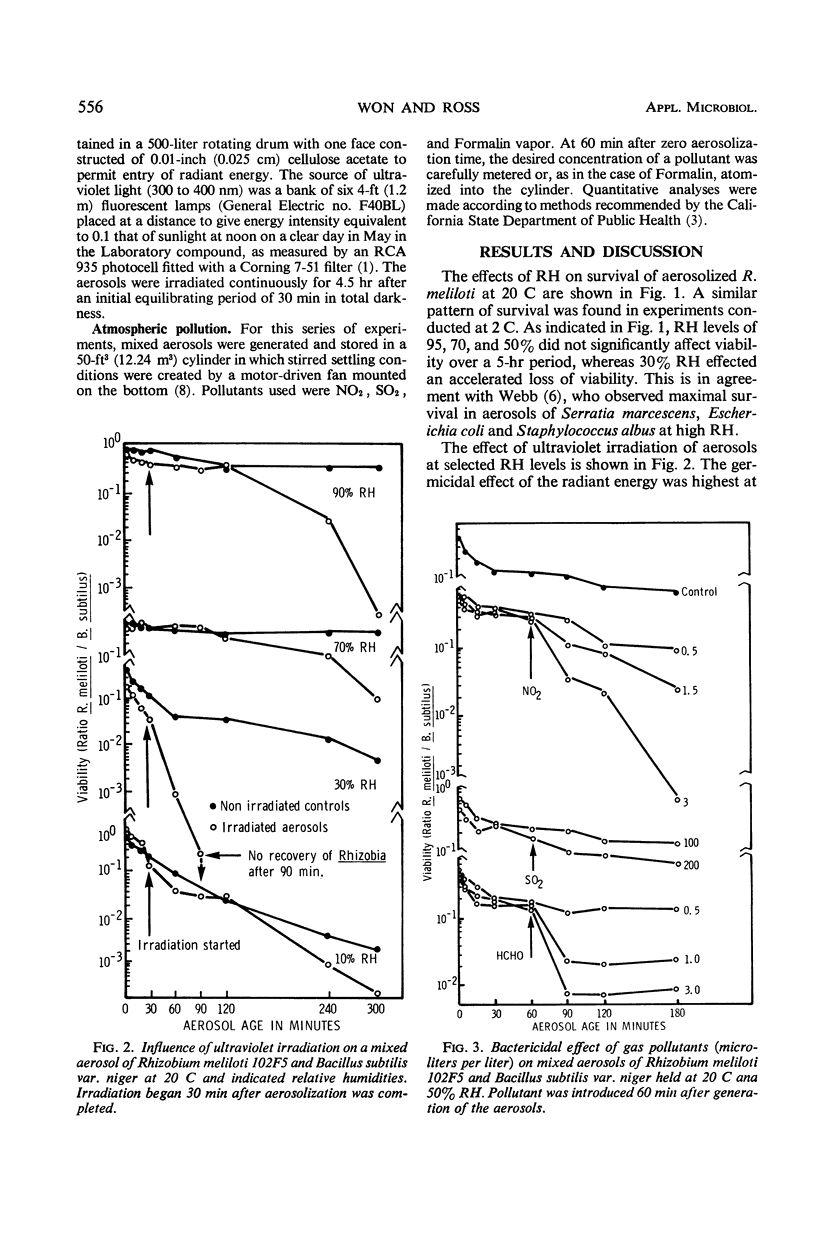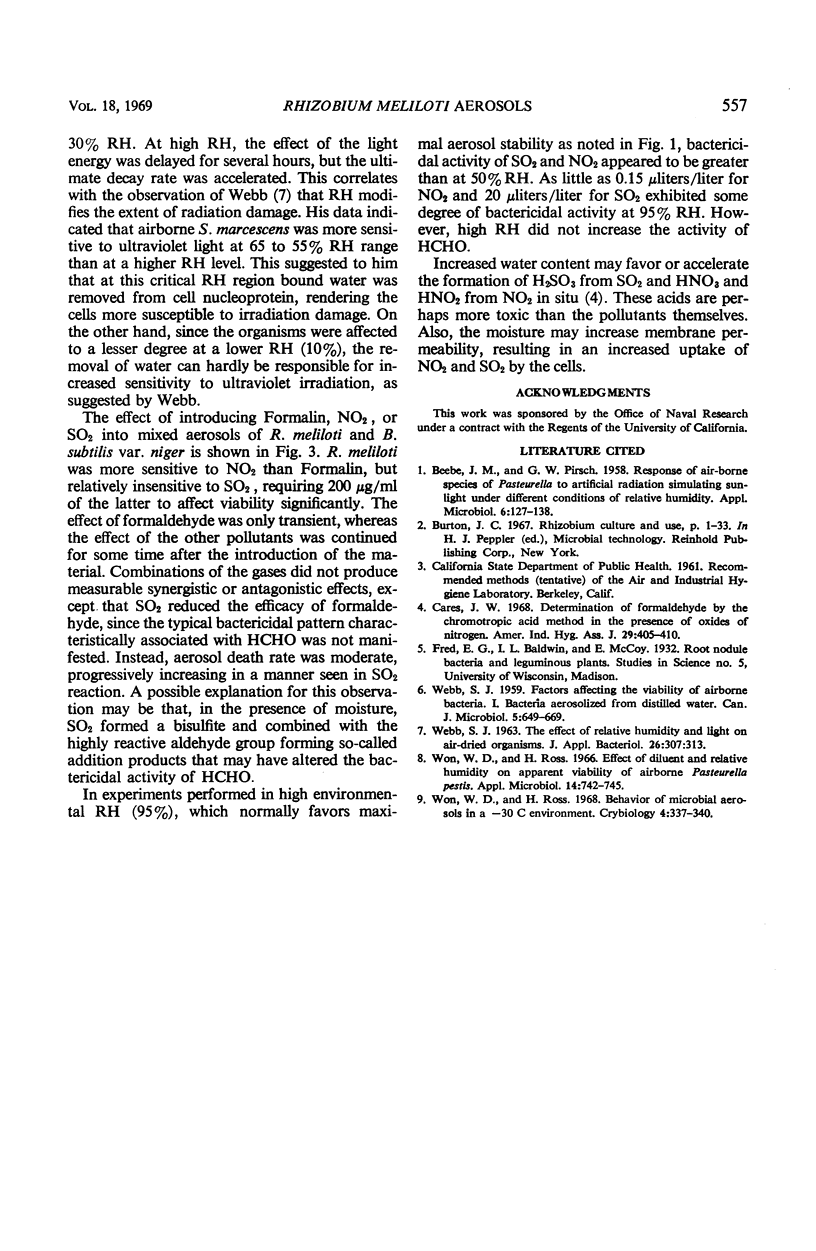Abstract
Survival of Rhizobium meliloti 102F5 in aerosols at 20 C was maximal at high relative humidity (RH) and minimal at low RH. Relatively high concentrations of NO2, SO2, or formaldehyde were needed to significantly reduce viability of R. meliloti in aerosols at 50% RH. Except for the reduction in activity of formaldehyde by SO2, there was no additive or antagonistic effect of mixing pollutants. High environmental RH enhanced bactericidal activity of NO2 and SO2. High RH minimized and low RH accentuated the biological effect of ultraviolet light of 300 to 400 nm wavelength.
Full text
PDF


Selected References
These references are in PubMed. This may not be the complete list of references from this article.
- BEEBE J. M., PIRSCH G. W. Response of air-borne species of Pasteurella to artificial radiation simulating sunlight under different conditions of relative humidity. Appl Microbiol. 1958 Mar;6(2):127–138. doi: 10.1128/am.6.2.127-138.1958. [DOI] [PMC free article] [PubMed] [Google Scholar]
- Cares J. W. Determination of formaldehyde by the chromotropic acid method in the presence of oxides of nitrogen. Am Ind Hyg Assoc J. 1968 Jul-Aug;29(4):405–410. doi: 10.1080/00028896809343024. [DOI] [PubMed] [Google Scholar]
- Won W. D., Ross H. Behavior of microbial aerosols in a -30 degrees C environment. Cryobiology. 1968 May-Jun;4(6):337–340. doi: 10.1016/s0011-2240(68)80133-6. [DOI] [PubMed] [Google Scholar]
- Won W. D., Ross H. Effect of diluent and relative humidity on apparent viability of airborne Pasteurella pestis. Appl Microbiol. 1966 Sep;14(5):742–745. doi: 10.1128/am.14.5.742-745.1966. [DOI] [PMC free article] [PubMed] [Google Scholar]


